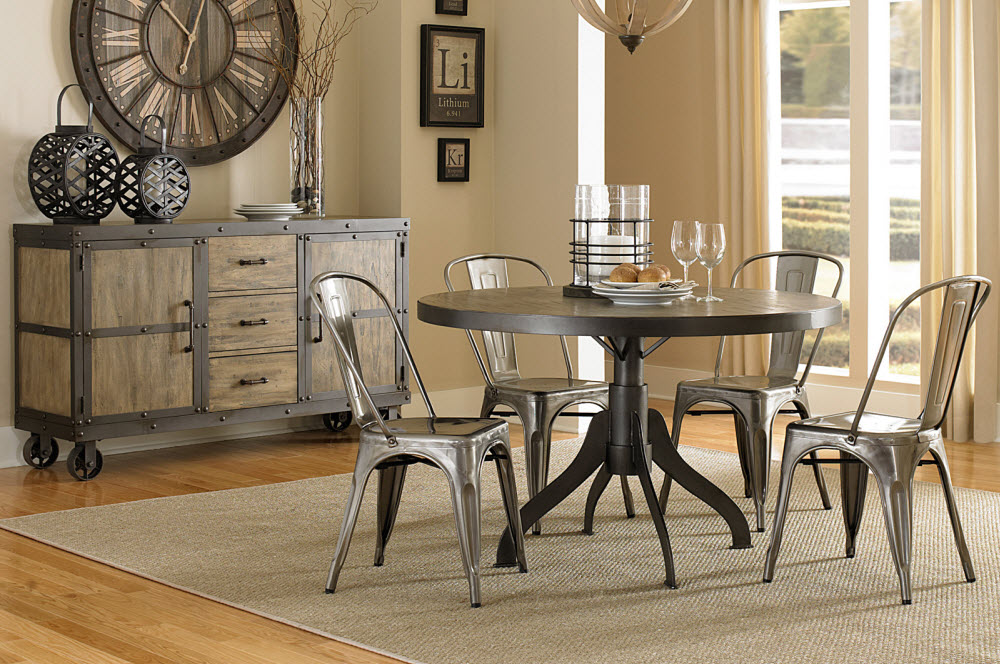The most necessary and confusing question to answer as an interior design client: “What’s your style?”
There are thirty plus categories of interior design styles. There are even categories dedicated to combined styles. How are you supposed to define your style? You may notice certain elements you gravitate towards, such as organic lines vs. linear lines, or bright colors vs. neutral colors. These are the things you need to pay attention to when trying to learn your style. I’ve selected 15 styles to break down and decode for you.

Photo via Cowhide Outlet
Modern
If you like simplistic furniture with hard lines, geometric patterns, symmetry, and neutral colors, you just might have modern taste.
Furniture: clean lines, metal, glass
Patterns: solid, geometric
Fabrics/Materials: linen, canvas, leather
Colors: neutrals, black, metallics
Decor: minimal knick knacks, heavy focus on artwork
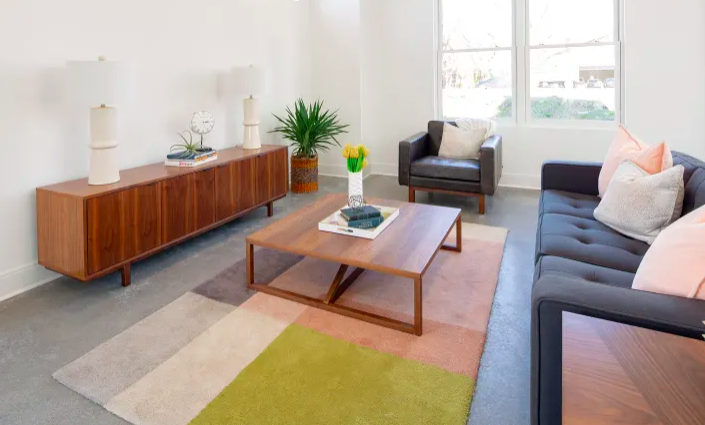
Photo via Apartment Therapy
Mid Century Modern
Mid Century Modern is a retro spin on modern design, often featuring hard lines with pops of vibrant, saturated colors. It is more relaxed, casual, and lived in compared the modern design. It tends to have similar elements as Bohemian.
Furniture: clean lines, elongated, medium to dark wood, plastic & metal
Patterns: solid, herringbone, geometric
Fabrics/Materials: canvas, leather, molded plastic
Colors: warm neutrals with bright, saturated colors
Decor: bold pop art, plants, dynamic decorative items
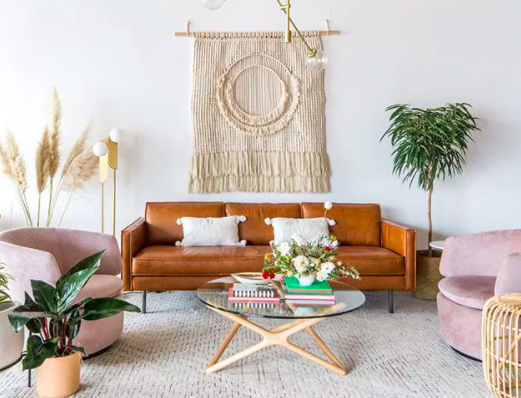
Photo via My Domaine
Bohemian
Bohemian design has gained a lot of traction the past few years. It focuses on nature and organic elements. It often feels like another culture, bringing nomadic elements to the space. If you don’t like order and love free-spirited vibes, boho may be your thing. Bohemian is often combined with modern.
Furniture: light wood, distressed, aged
Patterns: linear, tribal, textured, mix & match
Fabrics/Materials: burlap, cane, leather, rattan
Colors: white, tan, cognac
Decor: travel inspired knick knacks, tons of plants and dried flowers, macrame
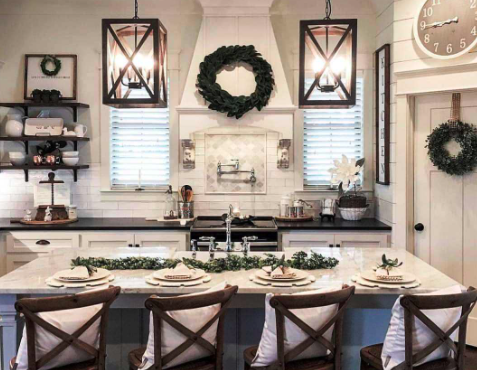
Photo via Top Home Design
Farmhouse
Farmhouse design dates back to our earliest settlers and tends to feel vintage and rustic. However, it is now often combined with modern design as well. Both classic farmhouse and modern farmhouse share similar elements.
Furniture: natural aged wood, slipcovers, antique pieces
Patterns: floral, plaid, paisley, gingham
Fabrics/Materials: burlap, canvas, galvanized metal
Colors: cream, gray, blue, copper
Decor: antiques, barn doors, word decor

Photo via Architecture Art Designs
Traditional
Traditional spaces often feel rich, heavy, and deep. It tends to be matchy and repeats elements in a symmetrical fashion. If you prefer to repeat patterns and purchase furniture in sets, your style is likely traditional. This style can often be combined with Glam.
Furniture: dark wood, ornate details, tufting
Patterns: damask, florals, stripes, leafy
Fabrics/Materials: velvet, linen, silk
Colors: tan, burgundy, brown, olive, plum, navy
Decor: floral arrangements, oil paintings, heavy frames, symmetry

Photo via Joss & Main
Transitional
Transitional design combines modern and traditional elements, which may seem contradictory, but they actually work well together. It combines feminine and masculine elements to create a cohesive feel.
Furniture: straight lines combined with curves, dark wood
Patterns: stripes, solids. subtle damask
Fabrics/Materials: linen, leather, chenille, corduroy
Colors: tan, gray, burgundy, brown, olive, plum, navy, black
Decor: leafy arrangements, candle sticks, thin matted frames, vases
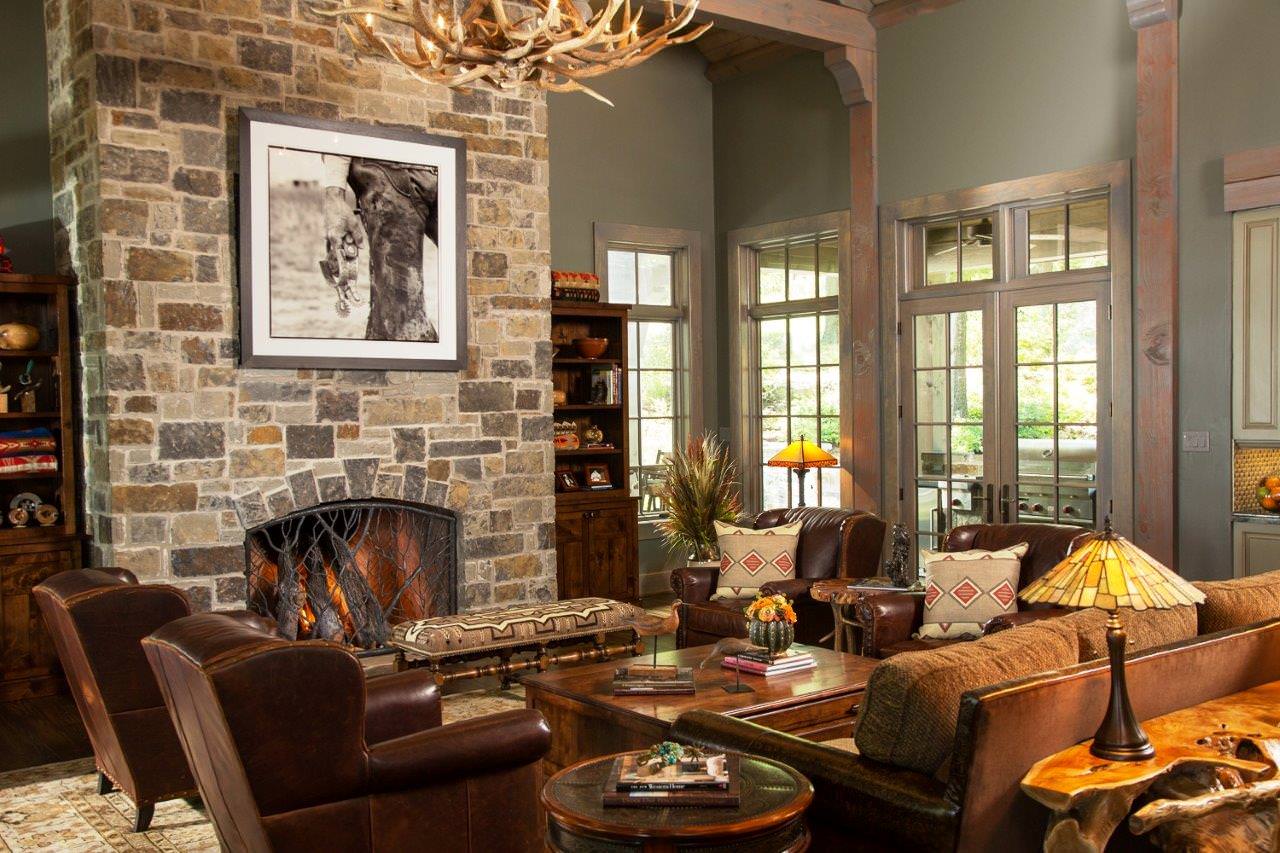
Photo via Anteks Home
Rustic
If you love organic elements in their most natural state, rustic design might be for you. Rustic spaces feel very earthy, raw, and rough. It tends to have more of a masculine feel.
Furniture: unfinished worn wood, heavy, hard lines, oversized
Patterns: solids, stripes, tribal, plaid
Fabrics/Materials: raw wood, stone, hide, burlap, cork
Colors: tan, gray, brown, black, cream, cognac
Decor: mason jars, wine bottles, animal heads & antlers, branches
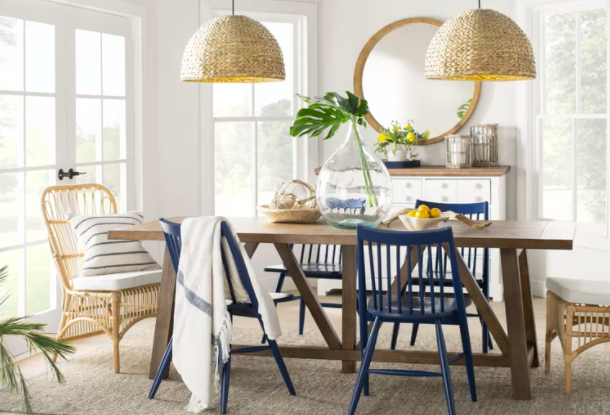
Photo via Joss & Main
Coastal
First and foremost, do not confuse Coastal design with Nautical! Coastal does not include loads of seashells and anchors. It does, however, have a beachy vibe without being kitschy. It is the epitome of light, open, and airy. The more white, the better!
Furniture: light wood, soft lines, plush seating, slip covers
Patterns: solids, stripes, leafy
Fabrics/Materials: wood, linen, jute, rattan, wicker, rope, bamboo, glass
Colors: white, cream, tan, gray, subtle blues
Decor: glass bottles, woven baskets, lanterns, very subtle beach elements such as shells or coral
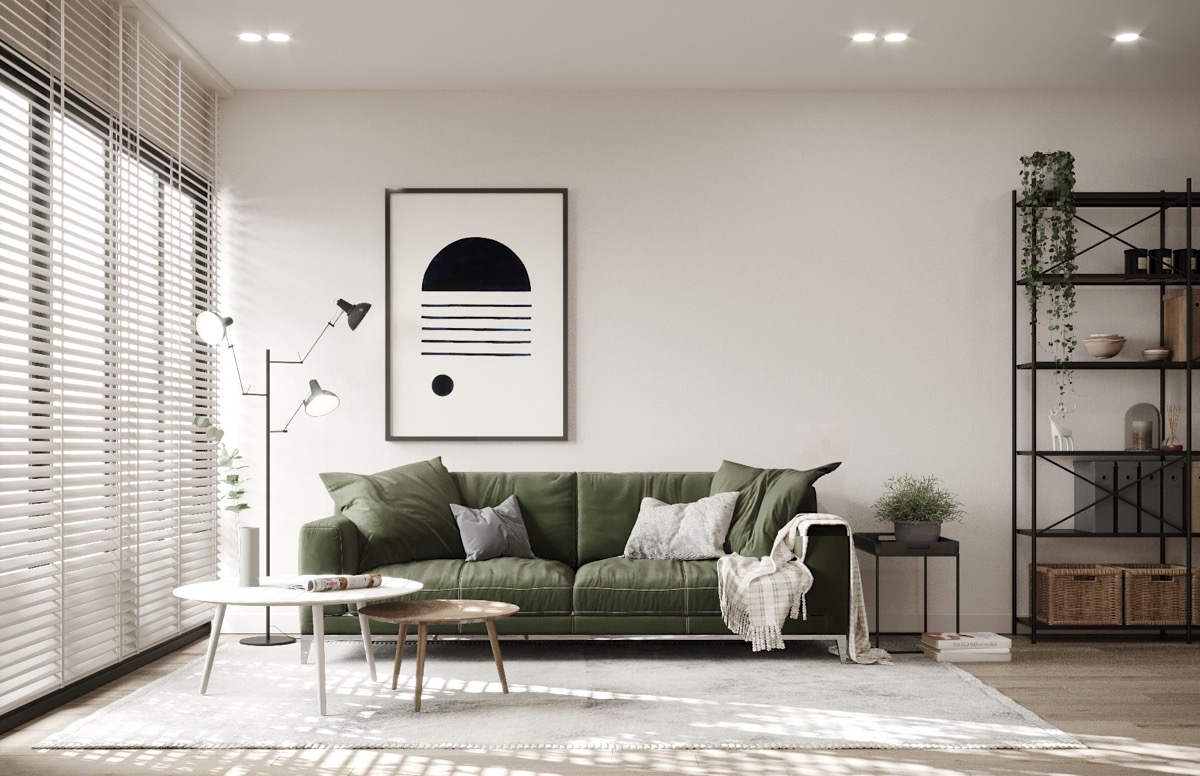
Photo via Home Designing
Scandinavian
The main focus in Scandinavian design is minimalism. An abundance of light is key, along with sleek white finishes and texture for depth. If you strongly believe less is more, consider Scandinavian style for your home. Anything added to the room should be functional and practical.
Furniture: elongated pieces, hard lines, simple & sleep
Patterns: solids, color blocking, subtle stripes
Fabrics/Materials: cotton, wool, metal, plastic, light wood
Colors: white, black, gray, cream, tan
Decor: thin frames, vases, books, very minimal knick knacks
Photo via Hayneedle
Industrial
A key component in industrial design is factory related elements. If you’re into an exposed, gritty feel, you may have an industrial interior design style.
Furniture: functional, hard lines, dark wood, metal, durable
Patterns: solids, geometric,
Fabrics/Materials: reclaimed wood, metal, wire, glass, leather
Colors: black, brown, gray, tan, copper
Decor: factory items such as gears, wheels, edison bulbs, lanterns, maps, blueprints
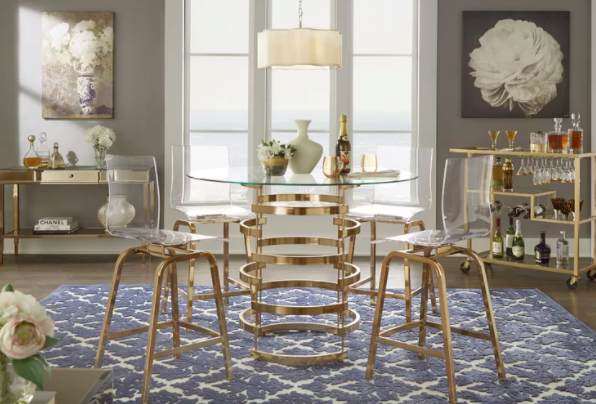
Photo via Wayfair
Glam
Think regal, luxurious, and glitz. Glam design is all about the elegant materials and finishes. If you’re into rich, Hollywood vibes, glam just might be your thing.
Furniture: detailed curves, upholstery, tufting
Patterns: solids, quatrafoil, fleur-de-lis
Fabrics/Materials: metal, glass, velvet, crystal, fur, mirrors
Colors: white, cream, gray, pastels, jewel tones
Decor: mirrors, crystal chandeliers, metallic accents, bouquets
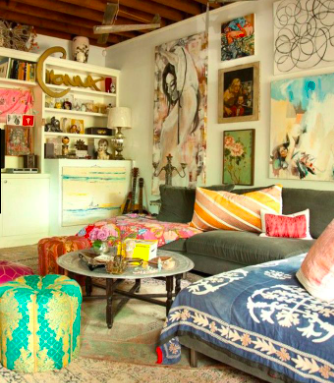
Photo via Refinery 29
Eclectic
If you enjoy breaking the rules, being unconvential, and loading up on meaningful knick knacks, you probably have an eclectic style. There isn’t a firm definition of what eclectic style consists of, however it tends to have an earthy, natural, warm feel.
Furniture: antiques mixed with new, hard lines mixed with ornate shapes
Patterns: solids, damask, florals, stripes, tribal
Fabrics/Materials: cotton, linen, velvet, silk, wood, macrame
Colors: anything under the sun!
Decor: thrifted & collected items, pieces with personal meaning, fun quirky objects, organized clutter

